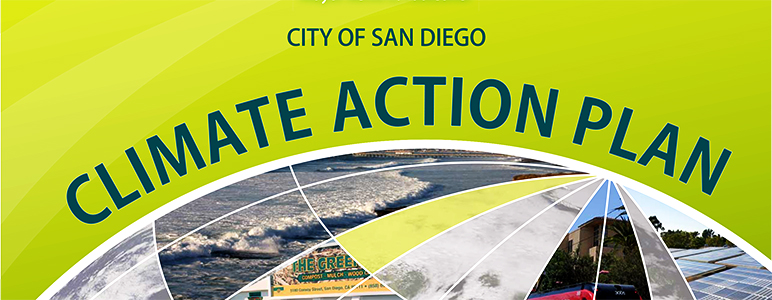


Contributor: Sumeeta Ghai
Originally published in the San Diego Business Journal, Feb. 1, 2016.
With a unanimous city council vote to adopt the San Diego ClimateAction Plan (CAP) on December 15, 2015, San Diego became the largest metropolitan area in the U.S. to adopt an aggressive target of 100 percent renewable energy within 20 years, positioning the city as a forward-thinking leader in climate policy both nationally and globally.
However, some have cautioned the city to look before it leaps into meeting the goals in the plan with an emphasis on the importance of cost-effectiveness.
What is a clean energy future worth?
Cost-effectiveness, not unlike San Diego weather, is something we can all agree is a good thing. Literally, cost-effective means “effective or productive in relation to its cost,” however, judging what is effective or productive is a value-based proposition.
For those who favor traditional energy infrastructure, such as power plants, cost-effectiveness compares the long-term benefits of providing electricity to the cost of construction. The costs are spread out across the predicted useful life of the investment, requiring ratepayers to pay for these investments over a long-term horizon. This approach means that ratepayers in the future will be still be using and paying for the investments we make today—which for fossil-fueled power plants means over 30 years of additional greenhouse gas emissions—without full consideration of the external negative impacts or costs associated with the electricity generation like pollution or water consumption.
Effective climate action requires that we think of renewable energy and clean transportation as investments in modern infrastructure, public health and community resiliency that yield long-term fiscal and physical paybacks. Whether it’s installing solar photovoltaics (PV) on residential rooftops or developing public transit, these are infrastructure investments with long lifetimes (20 plus years for PV panels; 50 plus years for trolley tracks). Renewable energy investment comes with additional benefits such as clean air, jobs for local residents, increased energy security, sustained advances in the local clean-tech sector and amenities that better attract and serve tourists and improve quality of life. These “nonenergy benefits” of transitioning to clean energy are clear and the positive economic impacts can already be felt in the San Diego region where solar companies employ more than 20,000 workers and energy efficiency supports another 40,000.
Perhaps even more striking are the potential costs of inaction to combat climate change. Leading insurance firms project that without concrete measures to reduce the impacts of climate change, high risk coastal communities can expect to see a doubling of losses for buildings by 2030.1
With San Diego’s downtown at 30 feet above sea level, over $100 billion in property assets are physically at risk to say nothing of public health, loss of business days, and safety concerns. Even more tangible in the short term is the potential decline in asset values for high-risk markets – such as waterfront property. Since 2013, insurers in California have been required to disclose climate-related risks when writing in excess of $100 million of direct premiums, and in Florida, Texas, Alabama and other Gulf States, insurance companies are simply leaving coastal markets.2
Invest in the future
The costs of inaction are steep and the benefits of leadership are clear.
Starting in 2016, San Diego has the opportunity to put its CAP into action and build the energy and transportation infrastructure that we need to be a resilient city of the future. The city is in a position to attract local clean energy jobs, investors, spur growth of local businesses, save residents money and enhance San Diego’s role as a national leader in sustainable technology and innovation.
Many of the economic benefits of the CAP will be quantifiable for our region. However, many others will be hard for economists to measure; rather, those benefits like clean air, safe water, healthier communities and overall quality of life are impacts people will feel and experience, making them want to invest in San Diego for the long-term. San Diego has charted an ambitious course to transition to a sustainable future. These changes won’t come easy, but nothing of worth ever does.
1 Coastal Communities and Climate Change, Risk Management Solutions and Lloyd’s, 2008.
2 Availability and Affordability of Insurance under Climate Change: A Growing Challenge for the United States, Journal of Insurance Regulation, National Association of Insurance Commissioners.

